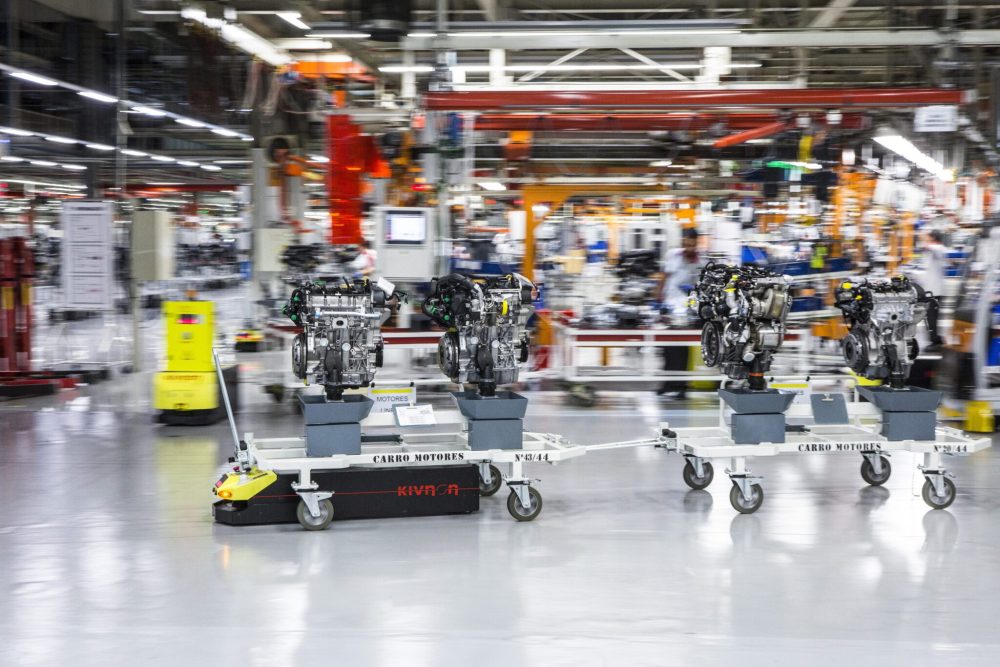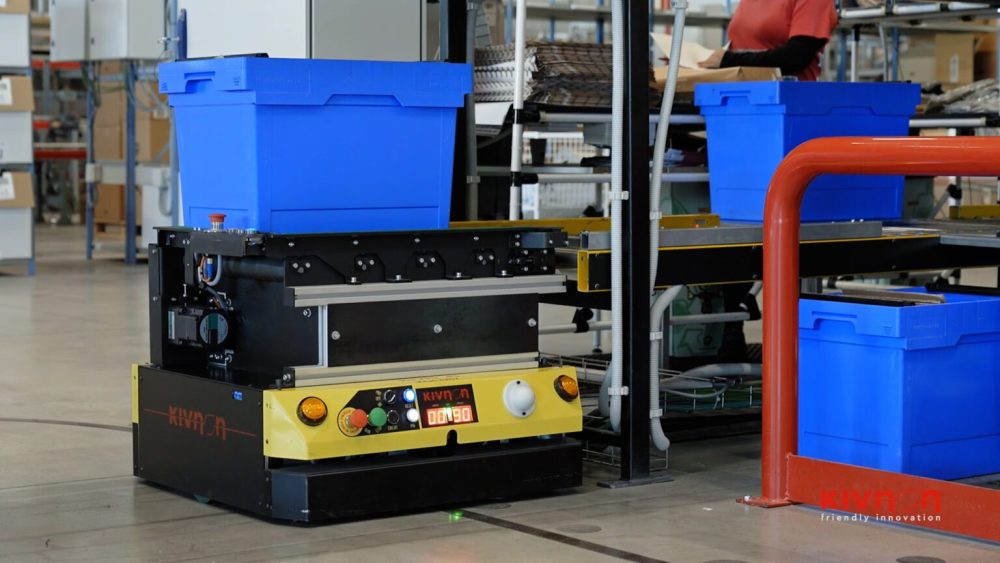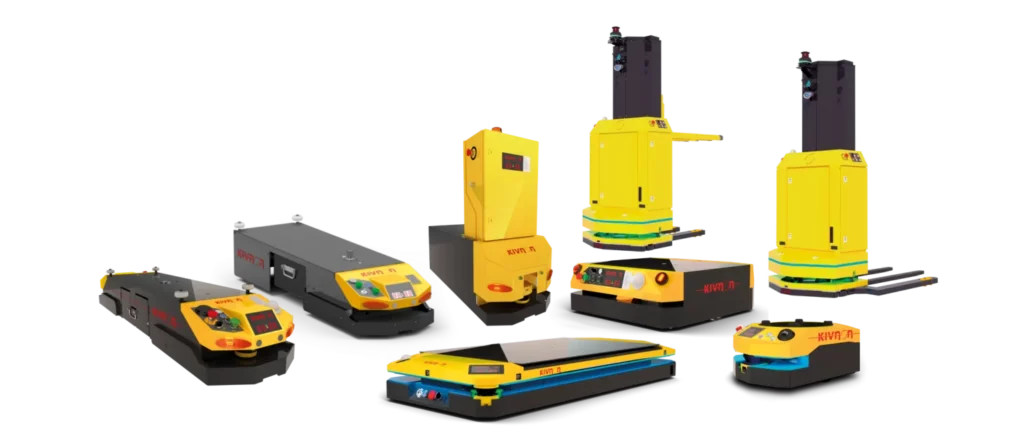AGVs and AMRs: Smart Automation for Industry and Logistics
Industrial automation has evolved rapidly, and AGVs (Automated Guided Vehicles) and AMRs (Autonomous Mobile Robots) are innovative solutions that optimize logistical and production processes. According to industry studies, the global market for AGVs and AMRs is growing at an annual rate of approximately 18% and 30%, respectively, driven by the need for automation and logistical efficiency. These technologies enable more efficient, safe, and flexible operations, boosting companies’ competitiveness.

What Are AGVs and AMRs?
AGVs (Automated Guided Vehicles)
AGVs are autonomous vehicles designed for material transport within industrial and logistics environments. They operate by following fixed routes defined by magnetic tape, embedded magnetic strips, or sensors. Some models can combine different navigation methods for greater flexibility.
AMRs (Autonomous Mobile Robots)
AMRs represent a technological evolution of AGVs, as they use autonomous navigation based on SLAM (Simultaneous Localization and Mapping) technology, allowing them to move freely without the need for fixed infrastructure. This technology enables real-time adaptation to changes in the environment.
What Are AGVs and AMRs?
AGVs and AMRs are widely used in industry and logistics to optimize material flow, reduce operational costs, and increase productivity.
Benefits and Impact on Operational Efficiency
- Increased Productivity: Studies indicate that adopting AGVs and AMRs can boost productivity by up to 10–20%.
- Operational Cost Reduction: Due to the decrease in human errors and process optimization, studies show that it is possible to achieve a reduction in operational costs of up to 20%.
- Greater Operational Efficiency: 24/7 operations without breaks, maximizing logistical and production efficiency.
- Error Reduction and Increased Safety: Lower risk for workers and greater accuracy in performing repetitive tasks.

How Do They Work?
AGVs use different navigation methods, generally based on fixed infrastructure, such as:
- Physical Tracks – Mechanical guidance along predefined paths.
- Magnetic Strips – Sensors detect magnetic adhesive strips placed on the floor.
- Embedded Floor Wires – A wire installed in the floor emits an electric/magnetic field that guides the vehicle.
- Marker-Based Navigation (QR Codes or RFID) – Sensors read tags placed along the route to determine the path.
- Laser Navigation (Fixed LIDAR) – Laser sensors detect reflectors in the environment to calculate the vehicle’s position.
AMRs use more advanced technology for autonomous navigation, without the need for fixed infrastructure:
- SLAM (Simultaneous Localization and Mapping) – Simultaneous mapping and localization algorithms create a real-time map of the environment.
- LiDAR Sensors and 3D Cameras – Enable navigation based on environmental reading and obstacle detection.
- Artificial Intelligence and Machine Learning – Dynamically adjust routes and improve efficiency over time.
- Sensor Fusion (IMU, Odometry, and Computer Vision) – Ensures precise movement and pattern recognition within the environment.
Types of AGVs and AMRs

Most Common AGVs:
- Unit Load AGVs – Transport individual loads, such as boxes or components, on a built-in platform.
- Tugger AGVs – Pull carts or trailers in logistical train formations.
- Forklift AGVs – Automatically move and stack pallets.
- Custom Transport AGVs – Designed for specific loads such as drums or metal sheets. For example, in the paper industry, they are used to move large paper rolls.
Most Common AMRs:
- AMRs for Small Item Transport – Used in warehouses and production lines for the agile movement of small parts.
- AMRs for Pallet Handling – An alternative to forklift AGVs, offering more flexible and adaptable operation.
- Collaborative AMRs – Operate alongside human workers, often guided by artificial intelligence for dynamic route optimization.
- Picking AMRs – Integrated with warehouse management systems, they assist in order picking and collection tasks.
The Brand We Represent: Kivnon
Kivnon, a brand represented by iDR, offers innovative solutions for a wide range of applications. Its AGV and AMR models include:
- Mouse: K10 One-Way (Unidirectional) and K11 Two-Way (Bidirectional)
- Twister: K05 (360° Rotational)
- Tractor: K32 (Unidirectional, Logistics Tugger)
- Forklift:
- K55B: Pallet stacker for Euro pallets (Bidirectional)
- K55A: Pallet stacker for American pallets (Bidirectional)
The navigation technologies it uses are:
- AGVs: Navigation using surface magnetic tapes or embedded magnetic strips in the floor.
- AMRs: Autonomous navigation based on SLAM, without the need for fixed infrastructure.
Kivnon is one of the global leaders in mobile automation solutions, providing AGVs and AMRs for industries such as automotive, food, electronics, and logistics.
Reference Clients:
Among the clients that trust Kivnon are major industry names such as Jaguar, Land Rover, Mercedes-Benz, Renault, Opel, Seat, Volkswagen, Scania, Navistar, Nissan, Ford, Faurecia, ABB, Inditex, Desigual, Gestamp, Lear, Idilia Foods, among others.
AGVs and AMRs are essential solutions for optimizing processes, reducing costs, and increasing operational efficiency. Don’t get left behind in the digital transformation of logistics! Contact us and discover how Kivnon’s AGVs and AMRs can take your company to a new level of automation and efficiency.
Sources:
PRNEWSWIRE.com, KIVNON.com, Sinova.com, Sinkar.com
Let's turn your ideas into reality?
Fill out the form and take the first step into the future with iDR®!
